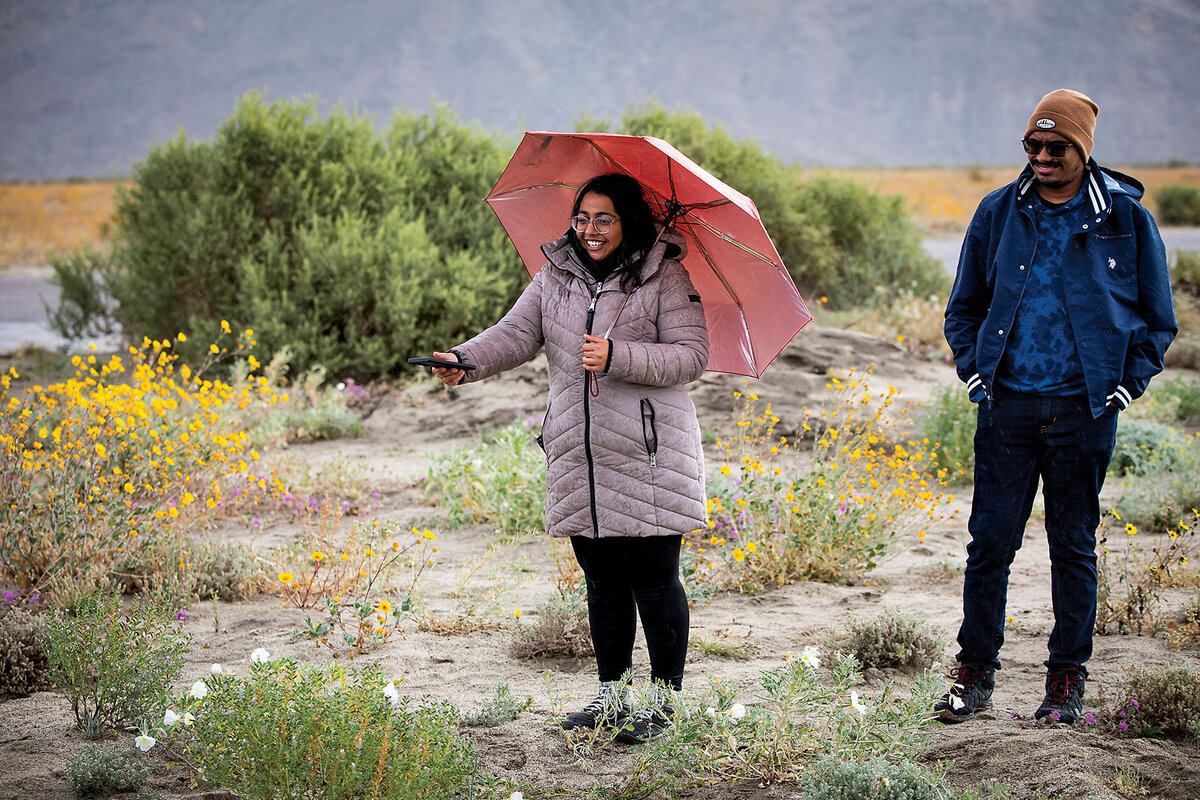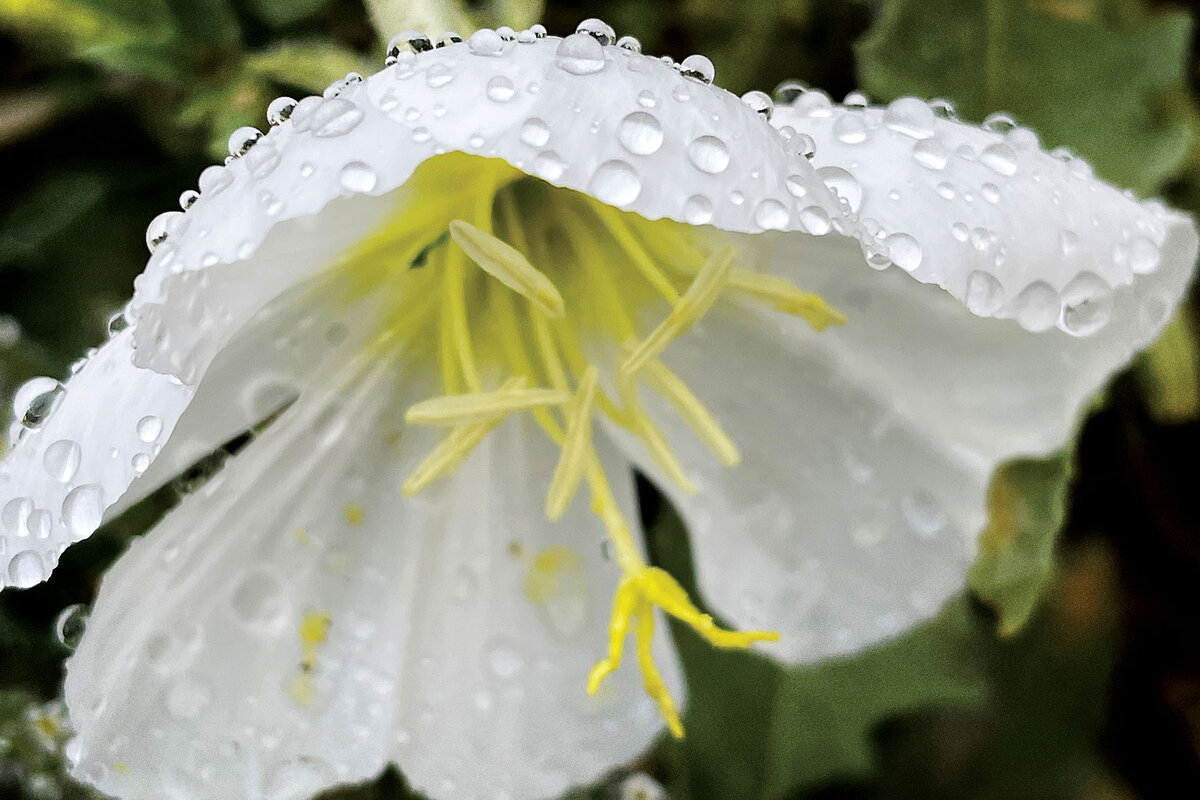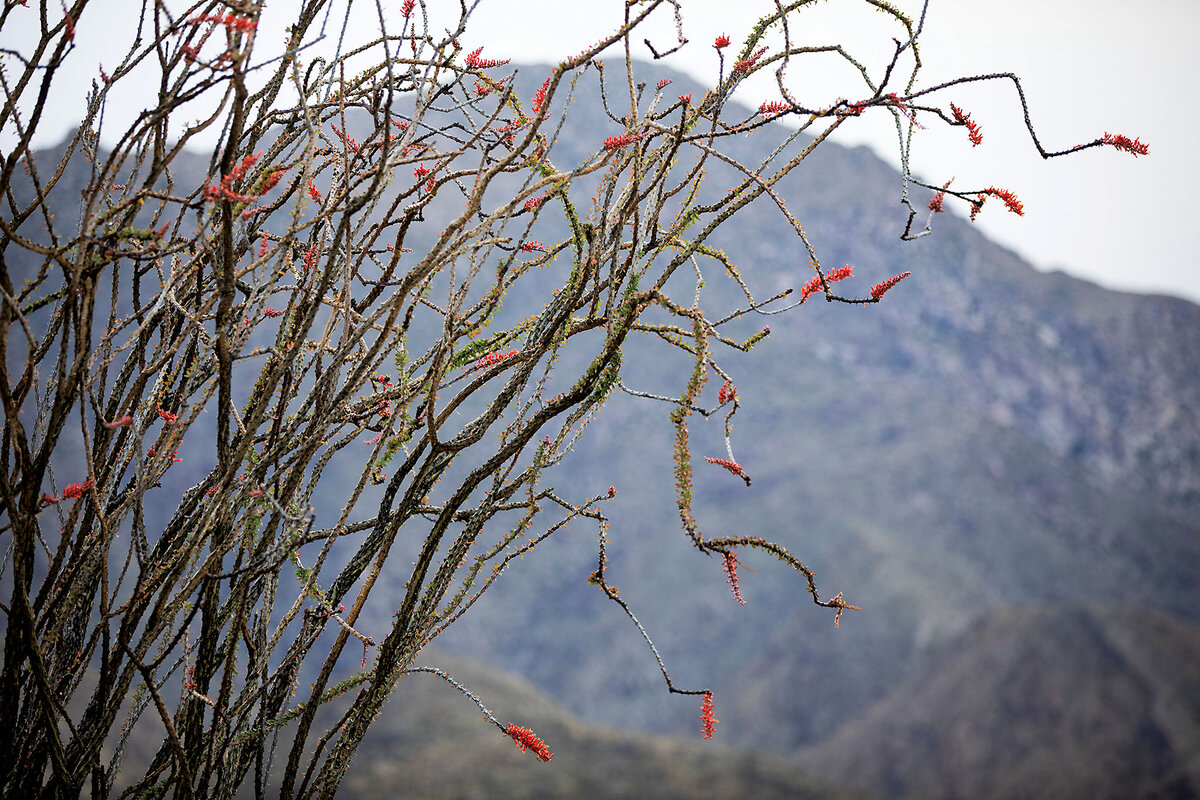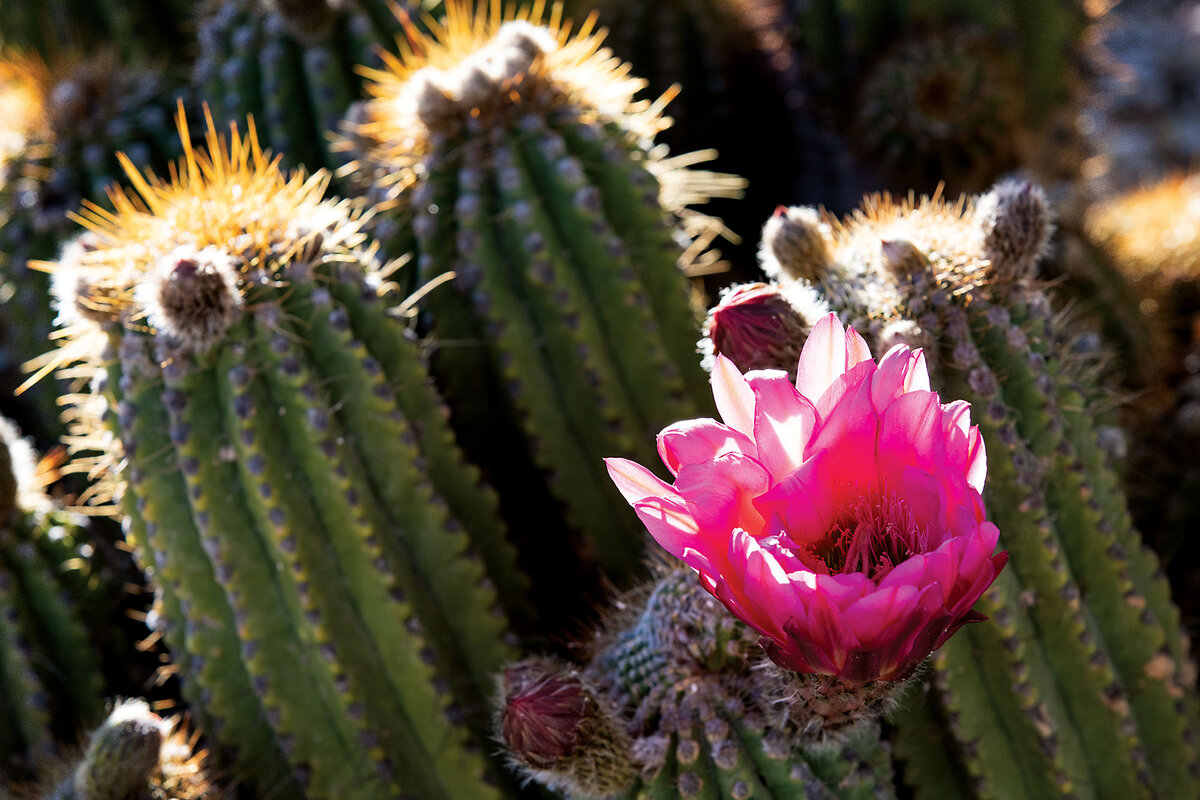California’s desert bloom comes alive on nature’s schedule
| Anza-Borrego Desert State Park, Calif.
Chasing California’s desert bloom is an inexact science, as Ruby Mittal found out.
The university student was on the hunt for wildflowers at Anza-Borrego Desert State Park, a remote destination known for its springtime bloom. But rain fell and a chilly wind blew as she and two friends viewed a display that clearly underwhelmed. According to the park’s wildflower hotline, the first phase of desert blossoms was waning.
“I have more flowers in my backyard!” Ms. Mittal told me, laughing from beneath her umbrella. Still, cheerful patches of color dotted the valley floor, including yellow desert sunflower and purple verbena.
“I love the flowers,” exclaimed Troy Savage, a retiree from Montana. Buoyant and grinning, he noted it was snowing in his home state.
Because winter was cold and wet, early April was too soon to view hillsides blanketed in orange poppies, California’s state flower. Instead, thanks to a Facebook post, I found an endless carpet of yellow goldfields near Kramer Junction, more than three hours from the state park.
When it comes to the desert bloom, Mother Nature keeps her own schedule.











